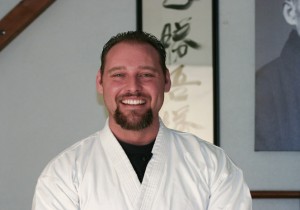Wandering Warrior- Qigong
By Jill Roth
THE MARTIAL ART
This month we’ll be entering the amazing world of Qigong with the gentle guidance of Bina Bou. Bina is a certified instructor of Qigong and Tai Chi who enjoys sharing her knowledge with her students in Cave Creek and other locations in the Phoenix, Arizona area.
DEFINITION OF QIGONG
I began with Bina’s website (www.binabouchi.com), which answers the question “What is Qigong?” Long used in training for the martial arts, Qigong is described by Bina as an exercise “designed to cultivate your Mind,Body, and your Spirit; and revitalize your Chi, the life force energy, by deep breathing and synchronized movements.”Qi or Chi means energy—a resource so essential it is impossible to define or translate Gong or Kung means to cultivate—a practice or methodology.
Qigong, therefore, refers to the exercise of one’s internal energy, and is a path to Mindfulness. Intention – Attention – Repetition – Guidance.
While everyone has Qi, most people don’t know how to tap its potential for healing and stress management. Qigong training allows practitioners to learn to relax and develop their mind-body connection. Through slow and gentle movements, Qigong has the practical benefits of providing balance and enhancing the body’s own natural healing—benefits which are documented in numerous medical publications.
With this background on the Qigong tradition, I attended one of Bina’s classes. To warm up, the group of about 24 gathered together in a large circle. You could feel the effervescent energy rippling around the room. We started with some wonderful, uplifting music and reflexology for the feet. We accomplished this
by walking in a giant circle, first on our toes, then on our heels, followed by the outsides of our feet, and finally on the insides of our feet. Next, we continued to walk while kicking out to the front, and then kicking our tushes, kicking out sideways, and lastly, marching with our knees up high. The room was filled with smiling faces, exuberant walking, and good cheer. Oh, and did I mention that the participants in the class ranged in age from 55–83?
Qigong can be used for its martial, healing, or meditative aspects. Bina says that Qigong is the mother of all martial arts, and that with slight variations it can be used for each of these goals. According to Dr. Jwing-ming Yang, a well-known teacher and author in the field, there are two separate trains of thought in the Qigong schools focused on martial arts. One, Nei Dan, believes that one should build Qi in the body and then have that spread to the limbs to increase their martial effectiveness. The other, Wai Dan, follows the belief that you should build up the Qi in your limbs and then have it flow inward to your internal Qi. This type of Qi can be used to “energize the skin and the muscles, enabling them to resist a blow without injury.” Both schools teach that by harnessing the focus of the mind (Yi), you can send Qi to the muscles and increase your fighting effectiveness. The progression of acupuncture theory also increased the effectiveness of Qigong as a martial art. By gaining a thorough knowledge of the acupuncture meridians, a Qigong practitioner would know the most effective cavities to hit and the necessary depth at which to strike. This combination of knowledge had made for a formidable martial art.
The meditative aspects of Qigong can be as simple as enjoying the focus and stress release of the movements, or as in-depth as the intense Marrow/Brain Washing, a level of training revered and kept secret from all but a handful of practitioners in every generation. To learn more about this area you can read the Marrow/Brain Washing Classic by Da Mo. Da Mo wrote this book about energizing the brain and attaining enlightenment after nine years ofseclusion in a Shaolin Temple.
Bina Bou has focused her practice on the healing properties of Qigong. I was impressed by how her students were brimming with health. Don’t be mistaken— many of her students have faced and overcome health obstacles that would have stopped others in their tracks. Take, for example, Debra, who developed a serious illness and was having difficulty with stamina and balance. Debra had been in a wheelchair before she started working with Bina. After a few months of Qigong practice, Debra was helped to the extent that she is now walking freely. But more on this later; back to the class…
Read the rest of the article and get facts about Qigong on pgs. 40-43







